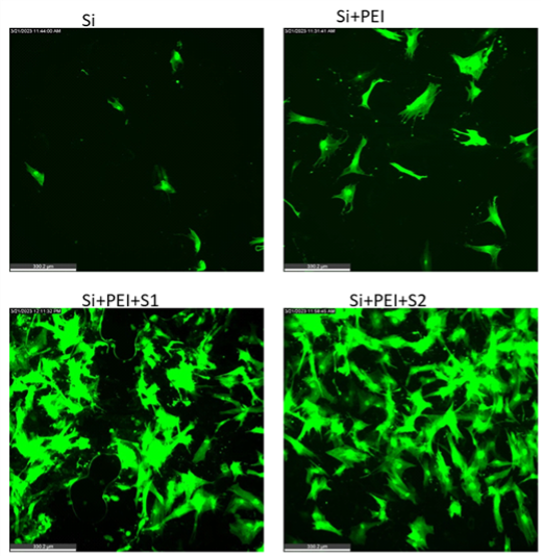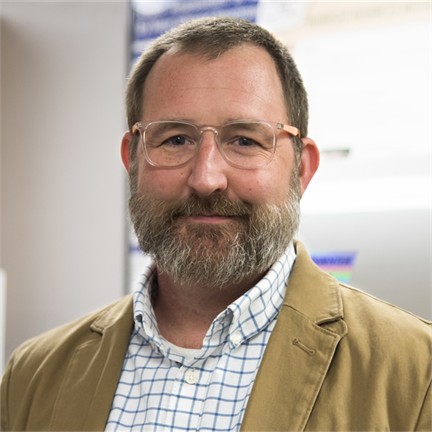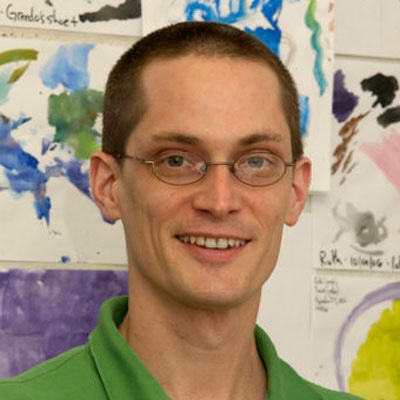Stem Cell Differentiation Directed by Pulp-Waste Carbon Quantum Dots
The Problem
The properties of carbon quantum dots (CQDs), such as high reactivity, sensitivity, stability, and functionalization, have made CQDs important for tissue engineering and regenerative medicine studies. Human mesenchymal stem cells (hMSCs) are a high research interest for organ scaffolding and regenerative medicine, but there is difficulty cultivating hMSCs for biomedical applications.
The Solution
Researchers at the University of Tennessee have shown that two lignin-derived CQD colloidal suspensions (S1 and S2) trigger responses in hMSCs and provide evidence that CQD scaffolds can control/guide lineage-specific responses making these critical in tissue engineering projects. Lignin, an abundant, renewable, and inexpensive natural carbon-based resource from woody plants, holds promise to be a long-term source material for CQDs. Pyrolyzed lignin was used as a precursor to synthesize the CQDs in aqueous solution, then amine groups were introduced to create nitrogen-doped lignin-CQDs.

Benefits
| Benefit |
|---|
| Lower cost and simplified differentiation compared to graphene oxide |
| Good cytocompatibility properties |
| Fluorescence to track location and progress of stem cells |
| Promotes stem cell proliferation and attachment |
| Stem cells seem to grow faster compared to graphene oxide |
| Easy to put on surfaces and hydrogels due to hydrophilicity |
| Easy to convert from lignin |
More Information
- Emma Vetland
- Assistant Technology Manager, Multi Campus Office
- 865-974-1811 | evetland@tennessee.edu
- UTRF Reference ID: 24117
- Patent Status:

Innovators
David Harper

Professor, School of Natural Resources, UT Institute of Agriculture, UT Knoxville
Dr. Harper received his PhD from Washington State University in 2003. He has a broad background in the manufacturing, designing, and characterization of natural composite materials. His formal training is in the design, manufacture, and mechanics of structural composite materials. Throughout his provisional career, his focus is on making new materials from renewable, plant-based sources. He has specific expertise in coupling natural and synthetic materials including the spectroscopic and mechanical evaluation of interfaces, which is reflected in his publications. Dr. Harper also has a strong interest in lignin and carbon-based materials for energy storage, structural reinforcement, filtration, and remediation.
Read more about David HarperMadhu Dhar

Research Professor, Director, Tissue Regeneration Laboratory, Department of Large Animal Clinical Sciences, UT Institute of Agriculture, UT Knoxville
Dr. Madhu Dhar received her PhD from the University of Pune, India. She is the Director of the Tissue Regeneration Laboratory in the Department of Large Animal Clinical Sciences and has a clinical focus in use of cell-based therapies for treatment of disease.
Read more about Madhu DharDavid Keffer

Professor & Associate Department Head, Department of Materials Science and Engineering, UT Knoxville
Dr. David Keffer earned a BS in Chemical Engineering from the University of Florida and a PhD in Chemical Engineering from the University of Minnesota. After a year as a post-doctoral scholar at the U.S. Naval Research Laboratory in Washington, D.C., he began his career as an engineering professor at the University of Tennessee in Knoxville, where he remains today, leading a computational research group interested in materials relevant to the pursuit of sustainable energy. He has published about 120 technical papers in archival journals. He was awarded a Fulbright Grant and spent a year (2010-11) at Yonsei University in Seoul, Korea. His research interests focus on the intersection of computational materials science and sustainability.
Read more about David Keffer